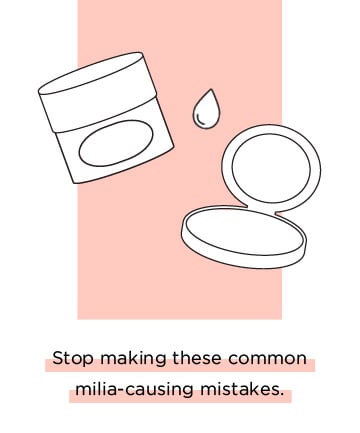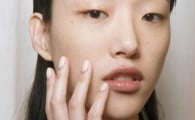Skin Care
You Probably Have Milia — Here's What They Are and How to Treat ThemThis pesky skin problem is more common than you think — and can be tough to get rid of. Here, how to prevent and treat milia |
You Get Them By Making These Common Mistakes Here's the freaky truth about milia: Dr. Elizabeth Tanzi, founder and director of Capital Laser & Skin Care and Clinical Professor of Dermatology at the George Washington Medical Center, says that many times there is simply no reason for them. (Cue the flashlight, campfire and scary stories.)
However, there are exceptions. Goldfaden says that using skin care and makeup that's too heavy or greasy for your skin, which can clog your pores, can bring them on. Instead of turning into acne, the clogged pore transforms into a milia (I know, and you thought the occasional pimple from sleeping in your makeup was bad).
"In the case of a milia, the pore becomes full with excess oil, make up, etc. then the skin actually grows over the pore, trapping it in," explains Vanessa Hernandez, consulting celebrity esthetician for L'Oréal Paris (she successfully got rid of one of my colleague's milia) -- this is what makes milia different from blackheads and acne, and also why they're so hard to get rid of.
Peredo adds that a strong corticosteroid or contact dermatitis can also contribute to the formation of milia.
SEE NEXT PAGE: You Can Prevent Them By Doing These Things
However, there are exceptions. Goldfaden says that using skin care and makeup that's too heavy or greasy for your skin, which can clog your pores, can bring them on. Instead of turning into acne, the clogged pore transforms into a milia (I know, and you thought the occasional pimple from sleeping in your makeup was bad).
"In the case of a milia, the pore becomes full with excess oil, make up, etc. then the skin actually grows over the pore, trapping it in," explains Vanessa Hernandez, consulting celebrity esthetician for L'Oréal Paris (she successfully got rid of one of my colleague's milia) -- this is what makes milia different from blackheads and acne, and also why they're so hard to get rid of.
Peredo adds that a strong corticosteroid or contact dermatitis can also contribute to the formation of milia.
SEE NEXT PAGE: You Can Prevent Them By Doing These Things


























